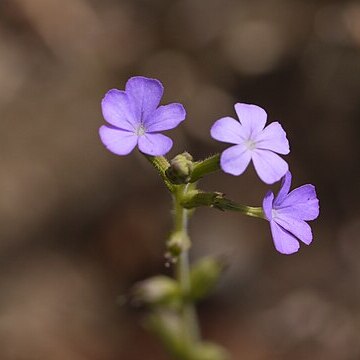Corolla blue, mauve to purple or white; tube 6–7.5 mm. long, cylindric, straight or rarely curved, glabrous to sparsely or slightly densely pilose; limb 3–5 mm. in diam.; lobes 2–2.8 x 1.75–2 mm., obovate to obovate-oblong, throat villous.
Calyx 4–8 mm. long, clearly to obscurely 10-nerved, 5-lobed, sparsely to variously densely hispid to hispid-short pilose, hairs mostly spreading; lobes 1–2 mm. long, linear-lanceolate to narrowly deltoid.
Flowers in terminal spikes, initially crowded at apex but soon becoming lax, spikes (2)6–25(40) cm. long; flowers sessile or with pedicels up to c. 0.5 mm. long.
Bracts 4–5 x 0.8–1(3) mm., ovate to lanceolate, acute or acuminate, but bracts of flowers larger, more leaf-like, pilose hispid or glabrous with ciliate margins.
Annual herb, up to 1 m. or more tall, erect; stems simple or much branched, terete above, usually long pilose below, hispid-pilose to scabrid above.
Bracteoles 2.8–4 x 0.15–0.4(1) mm., linear-lanceolate to subulate.
Variable erect herb 1-2 ft. high
Capsule 5–5.5 x 3 mm., ovoid.
Drying black.
Flowers mauve

